Meet Your Hominid Ancestors
-
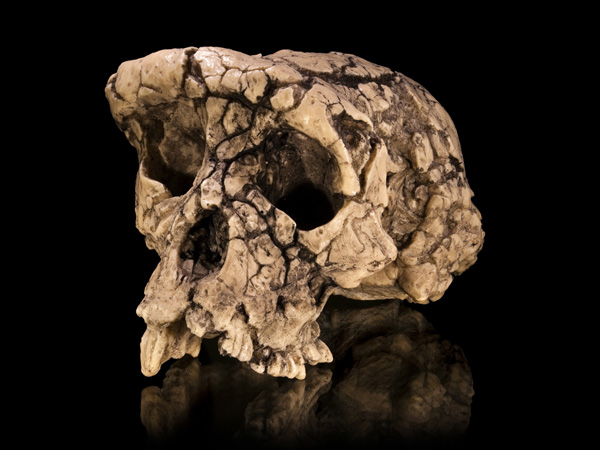 Anthropology Molecular and Imaging Synthesis of Toulouse specimen/Wikimedia Commons.
Anthropology Molecular and Imaging Synthesis of Toulouse specimen/Wikimedia Commons.Sahelanthropus tchadensis
Lived: About 7 million to 6 million years ago in West-Central Africa
Our earliest known human relative, Sahelanthropus tchadensis, displayed both ape and human features. Only cranial fossils have been found so far in modern-day Chad. This species had small canine teeth and walked upright on two legs instead of four—two characteristics that separate us from apes.
-
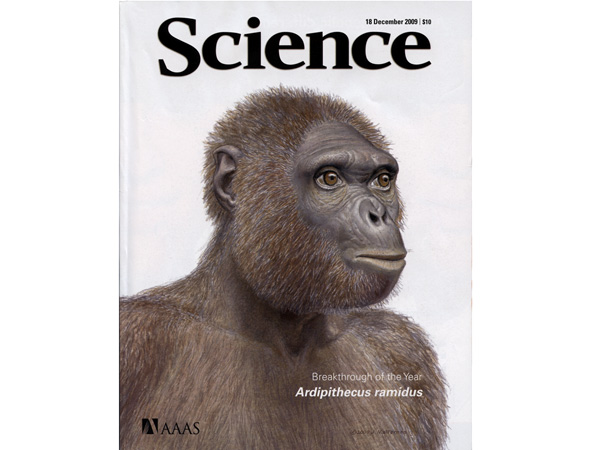 Cover of Science Magazine/Illustration by J. Matternes.
Cover of Science Magazine/Illustration by J. Matternes.Ardipithecus ramidus
Lived: About 4.4 million years ago in Eastern Africa
Average male: Unknown height and weight
Average female: 3’11”, 110 pounds
Was Ardipithecus ramidus bipedal, or did it hang out in the trees? Scientists suspect this early human ancestor did both. Ar. ramidus fossils show a divergent larger toe and a rigid foot—evidence of walking on two legs. But pelvis reconstructions suggest it had adaptations for both tree-climbing and bipedalism. Ar. ramidus had teeth suitable for a diet of plants, meat, and fruit, but no nuts—perhaps providing the first example of a helicopter parent panicking over an errant peanut.
-
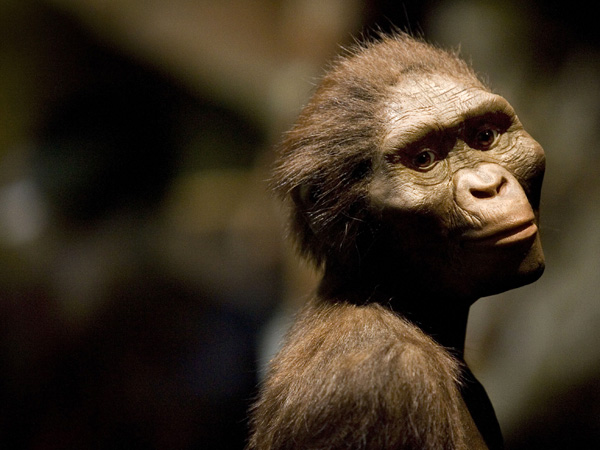 Photo by Dave Einsel/Getty Images.
Photo by Dave Einsel/Getty Images.Australopithecus afarensis
Lived: Between 3.85 million and 2.95 million years ago in Eastern Africa
Average male: 4’11”, 92 pounds
Average female: 3’5”, 62 pounds
Lucy, the one-name diva of the Australopithecus clan, and her posse roamed East Africa for nearly 900,000 years—more than four times as long as modern humans have hung around Earth. They walked on two legs and had flat noses and strongly projecting lower faces. Like chimpanzees, they had childhoods and adolescent periods of teenage angst that were brief compared with those of modern humans.
-
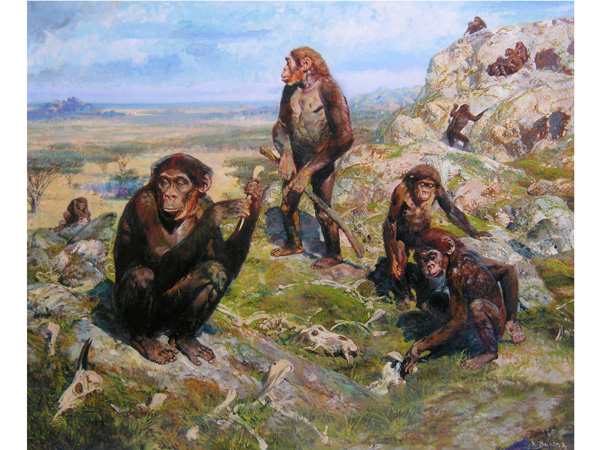 Zdenek Burian/AFP/Getty Images.
Zdenek Burian/AFP/Getty Images.Australopithecus africanus
Lived: Between 3.3 million and 2.1 million years ago in Southern Africa
Average male: 4’6”, 90 pounds
Average female: 3’9”, 66 pounds
Living amid numerous predators, Australopithecus africanus weren’t always at the top of the food chain, and they likely lived in groups for protection against predators. With a combination of human and ape features, they were anatomically similar to their cousins Au. afarensis. The first Au. africanus fossil to be discovered, in 1924, was known as the Taung child. Paleontologists have since realized that damage to the fossil’s skull indicates that the child was captured and eaten by a giant eagle. The fossil established that the earliest human ancestors lived in Africa.
-
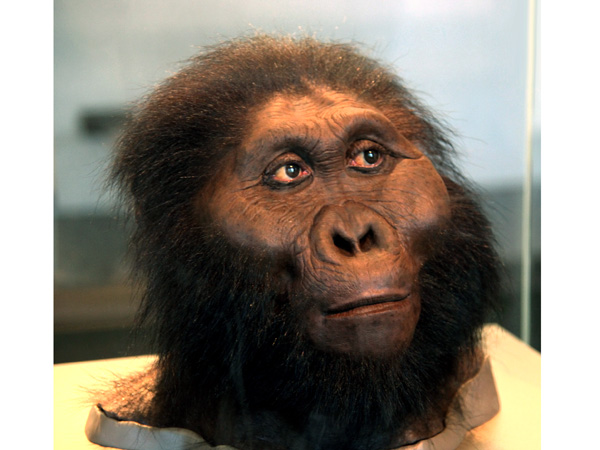 Tim Evanson/Wikimedia Commons.
Tim Evanson/Wikimedia Commons.Paranthropus boisei
Lived: Roughly 2.3 million to 1.2 million years ago in Eastern Africa
Average male: 4’6”, 108 pounds
Average female: 4’1”, 75 pounds
Paranthropus boisei are best known for their large cheek bones that housed powerful chewing muscles and big teeth. Fossils suggest they munched on both tough foods like nuts and roots and soft foods like fruit. They had the thickest tooth enamel of the early human ancestors.
-
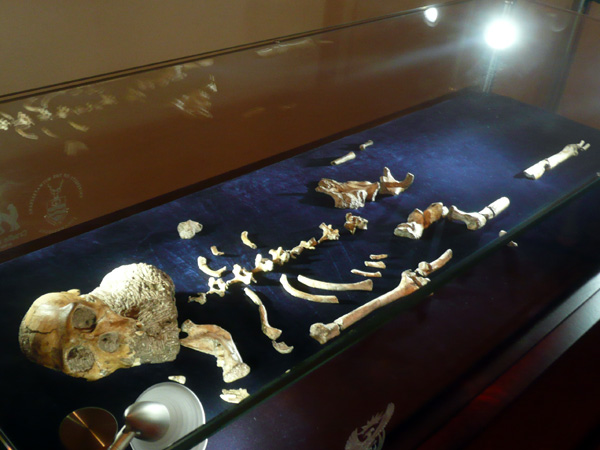 Phiston/Wikimedia Commons.
Phiston/Wikimedia Commons.Australopithecus sediba
Lived: About 1.95 million and 1.78 million years ago in Southern Africa
Our most recently discovered relative is Australopithecus sediba. Its fossils have characteristics that start to resemble those of our Homo genus, as our ancestors inched further away from our ape cousins. Au. sediba likely walked in an increasingly humanlike way and had facial features that more closely resembled your Aunt Mildred than King Kong, but they still had the small brains and long upper limbs found in our earlier tree-dwelling relatives.
-
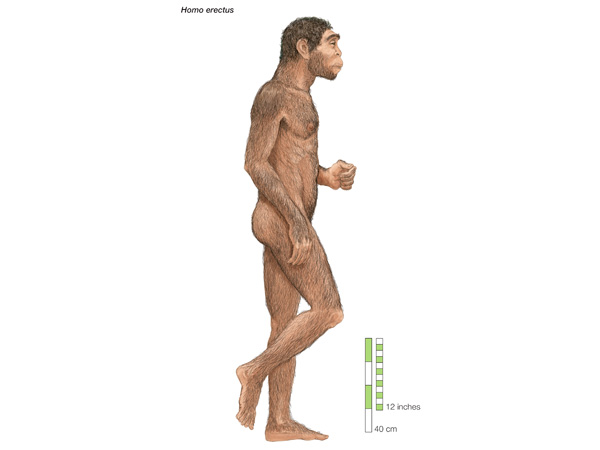 Encyclopaedia Brittanica/UIG/Getty Images.
Encyclopaedia Brittanica/UIG/Getty Images.Homo erectus
Lived: 1.89 million to 143,000 years ago in Northern, Eastern, and Southern Africa; parts of East and West Asia; possibly Europe
Average male and female: 4’9” to 6’1”, 88-150 pounds
As possibly the longest-existing member of human family tree, Homo erectus lasted about nine times as long as modern humans have so far. Its fossils—spread out over at least two continents—are highly varied. Early fossils found in Africa show H. erectus may be the first of our ancestors to have modern-day proportions: elongated legs and shorter arms relative to torso size. Thanks to better hip support that allowed them to walk long distances, they settled into new habitats spanning Africa and Asia. They made tools, including stone tools and tools to butcher large animals, and cared for their old and weak members.
-
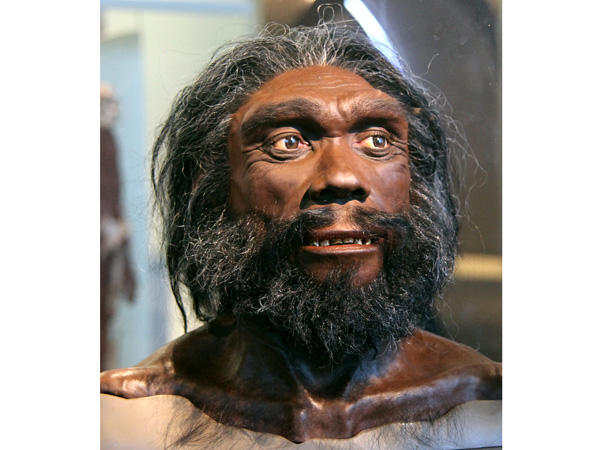 Photo by Tim Evanson/Wikimedia Commons.
Photo by Tim Evanson/Wikimedia Commons.Homo heidelbergensis
Lived: 700,000 to 200,000 years ago in Northern, Eastern, and Southern Africa; Europe
Average male: 5’9”, 136 pounds
Average female: 5’2”, 112 pounds
Homo heidelbergensis can boast of several firsts among human ancestors. They were the first to build simple shelters out of wood and rock and the first to regularly hunt large animals. They were among the first to inhabit cold European climates. The jury’s still out on other possible firsts, such as earliest control of fire and first use of wooden spears.
-
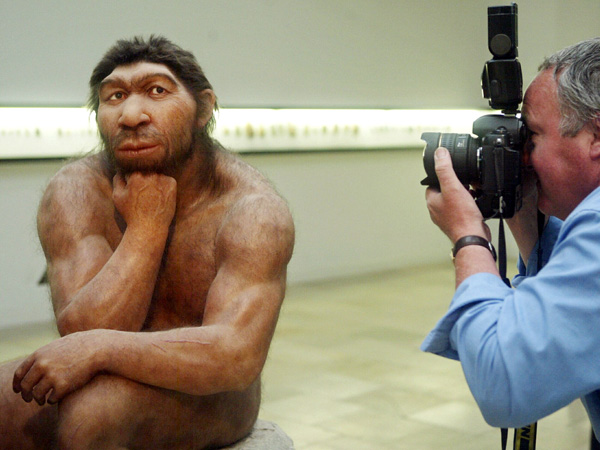 Photo by Sebastian Willnow/AFP/Getty Images.
Photo by Sebastian Willnow/AFP/Getty Images.Homo neanderthalensis
Lived: About 200,000 to 28,000 years in Europe and Asia
Average male: 5’5”, 143 pounds
Average female: 5’1”, 119 pounds
Our closest extinct relative, Neanderthals were possibly the first human ancestors to speak and bury their dead. They hunted large animals, ate plant foods, lived in shelters, wore clothing, and created symbolic or ornamental objects. Their broad bodies, short legs, and large noses, which could humidify and warm cold, dry air, allowed them to survive in cold climates. Neanderthals and modern humans also likely got a little frisky with one another.
-
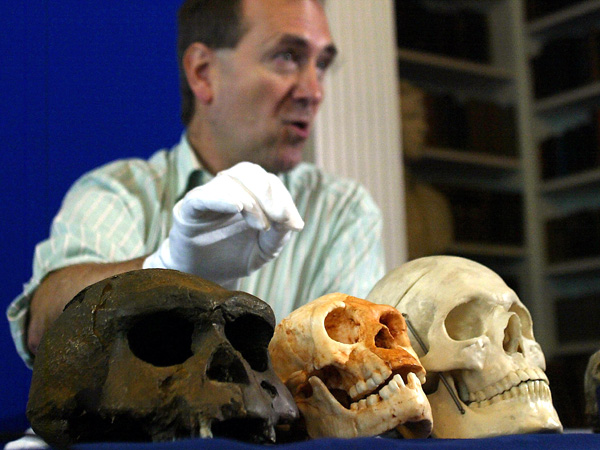 Photo by Jim Watson/AFP/Getty Images.
Photo by Jim Watson/AFP/Getty Images.Homo floresiensis
Lived: 95,000 to 17,000 years ago in Flores, Indonesia
Average male: unknown
Average female: 3’6”, 66 pounds
Homo floresiensis, center skull, appears to be the last of our hominin cousins to go extinct. Their fossils have been located on only a single Indonesian island. They had large teeth, recessed chins, large feet relative to short legs, and brains roughly one-third the size of ours. Despite their small bodies and brains, they hunted and may have used fire. Their small stature likely helped them survive on an island with limited resources, and they may have been vulnerable to large predators such as Komodo dragons.
-
 Photo by Kevin Winter/Getty Images.
Photo by Kevin Winter/Getty Images.Homo sapiens
First appeared: About 200,000 years ago
Modern humans evolved in Africa during a period of climate change roughly 200,000 years ago and shared the planet with a few other human species. We bounced back from a period of near-extinction about 74,000 years ago—at our lowest point, our team amounted to about 10,000 reproducing adults—to introduce Earth to agriculture, animal domestication, Justin Bieber, and a fascination with our extinct predecessors.
